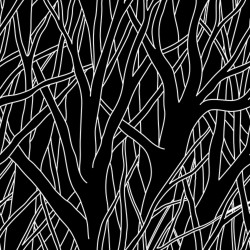Seasonal Affective Disorder
If you suffer from seasonal affective disorder suffer, you may experience depression during particular months (usually winter). These symptoms later subside as soon as the months or season ends. This type of disorder is referred to as seasonal affective disorder (SAD). This condition is also referred to as “winter blues,” “summer blues,” “winter depression,” “seasonal depression” and “summer depression.” Seasonal affective disorder occurs when you experience depression only during specific months or times of the year.
This disorder is linked to changes in light during certain seasons or months and how you perceive those changes. It is known to affect approximately half a million men and women across the globe from September to April. The most cases of seasonal affective disorder occur between December and February. A milder form of this disorder is called “winter blues.” Winter blues tend to affect a significant proportion of the world’s population.
Prevalence:
- Seasonal affective disorder is known to affect women more than men. Approximately 3 out of 4 women suffer from this disorder.
- It typically presents between the ages of 18 and 30.
- This disorder is rare in countries located near the equator, but common in the southern and northern hemispheres
- The severity of the condition is completely dependent upon your predisposition to the disorder as well as your geographical location.
Diagnosis:
Four criteria that must be met in order to be diagnosed with SAD:
- There must be episodes of depression and altered mood at particular times or months during the year.
- Hypomania or mania is observed during specific periods.
- The symptoms must last for two consecutive years without the presence of any other depressive disorders or episodes that are unrelated to seasonal changes during that time.
- These symptoms must outnumber your total number of episodes of depression.
There are three main types of the seasonal affective disorder and each type has its own characteristic symptoms.
 You may mistake shifts in energy during the winter as “normal” behavior and neglect to recognize the symptoms of seasonal affective disorder. This can cause your condition to go untreated and prevent you from receiving the treatment that could restore your mental health.
You may mistake shifts in energy during the winter as “normal” behavior and neglect to recognize the symptoms of seasonal affective disorder. This can cause your condition to go untreated and prevent you from receiving the treatment that could restore your mental health.
Possible Causes:
Sunlight and light variations during specific seasons can affect your behavior and activity levels. A shift in your internal biological clock (circadian rhythm) along with a change in season can disrupt your internal schedule. The pineal gland of your brain secretes melatonin, a hormone associated with sleep and sleeping patterns. In addition, melatonin can trigger depression and alter your moods during specific times of the year.
SAD is diagnosed after you have been depressed for 3 consecutive winter seasons. Usually the depression disappears during spring and summer. If this occurs then you will more than likely be diagnosed with seasonal affective disorder. This disorder is not very well known, but it has been added to the DSM-IV (4th addition) as an indicator of major depression. The seasonal affective episodes of depression have their own diagnostic criteria according to the manual.
Symptoms:
If you have this disorder it is not uncommon to sleep more, have low energy levels and/or suffer from depression. In the summer these symptoms tend to disappear and when this occurs the disorder is termed as reversal seasonal affective disorder. If you suffer from reversal seasonal affective disorder, you may also suffer from heightened anxiety.
The following symptoms are associated with seasonal affective disorder:
- Difficulty in concentrating and memory problems
- Problems making decisions
- Decreased energy levels and/or fatigue
- Feelings of worthlessness, guilt and/or helplessness
- Feelings of pessimism and/or hopelessness
- Early-morning wakefulness, insomnia or excessive sleeping
- Restlessness and irritability
- Loss of pleasure or interest in activities that were once pleasurable (such as sex)
- Changes in eating patterns
- Persistent headaches, aches or pains, cramps and/or problems with digestion
- Persistent anxious, sad or “empty” feelings
- Thoughts of taking your life and/or suicide attempts
- Feelings of anxiety or tension and stress intolerance
- Extreme changes in mood (such as displaying mania during the spring and summer seasons)
- Sweet and starchy foods cravings that result in weight gain
- Loss of desire to have social contact, preferring to stay alone
- Loss of sexual desire and social isolation
Treatment:
Seasonal affective disorder is treated with a combination of medication and psychotherapy. Light therapy is also effective when treating this condition.
References:
PubMed Health. (2012). Seasonal affective disorder. A.D.A.M. Medical Encyclopedia. Retrieved from www.ncbi.nlm.nih.gov/pubmedhealth/PMH0002499/
American Psychiatric Association. (2001). Diagnostic and statistical manual of mental disorders (4th ed.). Washington, D.C.
National Institute of Mental Health. (2009). Signs and symptoms of depression. Retrieved from www.nimh.nih.gov





